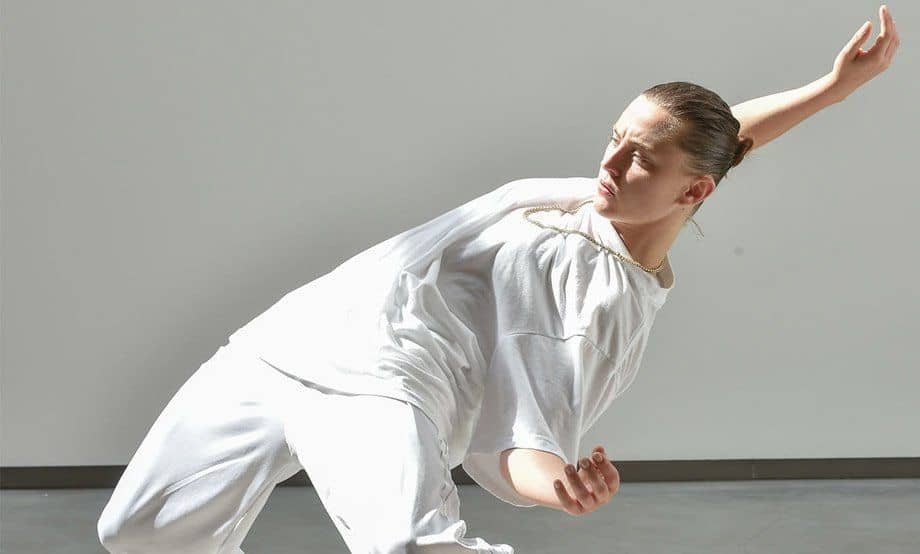As deep winter moves into spring, the already busy New York dance scene gets even more dizzying. Here are upcoming events I’m excited to see.
We begin the month with Joya Powell and her MOPDC (Movement of the People Dance Company). I’ve loved Joya’s work since I first saw her company about 3 years ago. A New York native, a High School of Performing Arts grad, Joya and her company embrace today’s social and political issues, questions of identity and belonging, with sensitivity and humor. A work-in-progress – What’s Left of Spring – will be at one of New York City’s best free dance events (March 2.) Don’t miss the chance to see what they’re working on!
The rest of the month at Movement Research at Judson Church is also worth paying attention to. Up-and-coming dancer/choreographer Jasmine Hearn and Anabella Lenzu are March 9. andrea haenggi & urban mosses bring Haenggi’s “ethno-choreo-botan-ography in an exploration that began as a five-year movement-based project in Crown Heights (March 16). Finally, veteran choreographer Yoshiko Chuma performs on April 6. If you’ve never seen Chuma, don’t miss the opportunity.
Mondays at 8
Movement Research @ Judson Church
55 Washington Square S
https://movementresearch.org/events
2019 Guggenheim Fellow and New York Dance and Performance “Bessie” Award winner Kimberly Bartosik /daela brings her newest work to Live Arts as part of their Live Feed Residency program. The former Merce Cunningham dancer’s always rigorous approach here creates layers of encounters. Beginning “inside of a storm of unbounded physical intensity,” through the mirror of their eyes is wild and tender. Caught “in the wake of experience,” Bartosik says the dance, performed by the exquisite Joanna Kotze, Dylan Crossman, and Burr Johnson, is an “extremely hard piece physically and emotionally.” They are joined by three young performers, Dahlia Bartosik-Murray, Hunter Liss, and Winter Willis, leading the way into the future. If that’s not enough, the audience is invited to populate a crowd scene. On March 5, former Brooklyn Academy of Music Executive Producer Joe Melillo will host a Stay Late Conversation.
March 4-7 at 7:30
New York Live Arts
219 W. 19th St.
https://newyorklivearts.org/event/kimberly-bartosik-untitled/
That same weekend, the wonderful, intimate Brooklyn theater, JACK shows This Is Now, and Now, and Now. Reflecting on our early desire to be older, and our increasing dismay at growing old, This Is Now is a humorous look at the imperfection of life, performed by cakeface (Ali Castro, Jade Daugherty, Ayesha Jordan, Nola Sporn Smith), an all-female, intergenerational ensemble. Culturebot describes them as “a group of fierce, funny, talented women.” Created by Artistic Director Amanda Szeglowski.
March 4-7 at 8:00
JACK Brooklyn
18 Putnam Ave., Clinton Hill
http://www.jackny.org/this-is-now-and-now-and-now.html
The 92Y has a long history of supporting modern dance; the Harkness Dance Festival is the biggest event of their season. Curated by Catherine Tharin, this year’s festival, which runs from February through the end of March focuses on foreign choreographers. Oona Doherty (from Belfast, Ireland), with DJ Joss Carter, brings Hope Hunt and Lazarus and the Birds Of Paradise, a portrayal of the “male disadvantaged stereotype.” Tap improviser Kazu Kumagai (Sendai, Japan) shares his always charming, dynamic tapping in Good Rhythm Wonderful Life. Finally. Finally, Sara Cano (Madrid, Spain) creates a unique blend of flamenco, Spanish folklore, butoh, and Israeli folk dance in A Palo Seco.
March 6-21, times vary
1395 Lexington Avenue between 91st & 92nd St.
Harkness Dance Festival
https://www.92y.org/harkness-dance-festival
At the end of the month ,one of my new favorite dance events takes off. LayeRhythm Jam is like a jazz session for dancers. Organizer Mai Le Ho (Mai Lê Grooves) matches street/club dancers, many well-known, with talented musicians, rappers, and spoken word artists. Reversing the usual dancer/musicians dynamic, LayeRhythm musicians riff off the dancers, their musical riffs following the dancers’ gestures. Together they create playful, sometimes serious, even emotional, made-up-on-the-spot dances. Not like anything you’ve ever seen – party in a performance.
Last Tuesday of the month
Nublu
151 Avenue C










